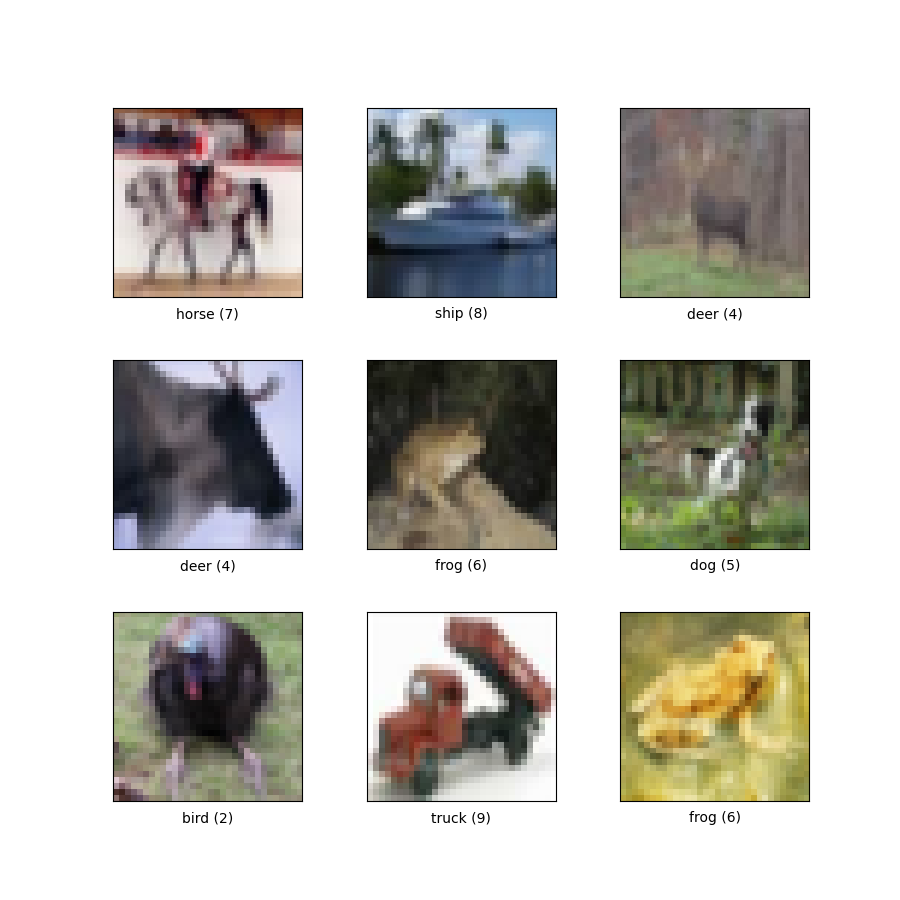- Description:
A re-labeled version of CIFAR-10's test set with soft-labels coming from real human annotators. For every pair (image, label) in the original CIFAR-10 test set, it provides several additional labels given by real human annotators as well as the average soft-label. The training set is identical to the one of the original dataset.
Homepage: https://github.com/jcpeterson/cifar-10h
Source code:
tfds.image_classification.cifar10_h.Cifar10HVersions:
1.0.0(default): Initial release.
Download size:
172.92 MiBDataset size:
144.85 MiBAuto-cached (documentation): Yes
Splits:
| Split | Examples |
|---|---|
'test' |
10,000 |
'train' |
50,000 |
- Feature structure:
FeaturesDict({
'annotator_ids': Sequence(Scalar(shape=(), dtype=int32)),
'human_labels': Sequence(ClassLabel(shape=(), dtype=int64, num_classes=10)),
'id': Text(shape=(), dtype=string),
'image': Image(shape=(32, 32, 3), dtype=uint8),
'label': ClassLabel(shape=(), dtype=int64, num_classes=10),
'reaction_times': Sequence(Scalar(shape=(), dtype=float32)),
'soft_label': Tensor(shape=(10,), dtype=float32),
'trial_indices': Sequence(Scalar(shape=(), dtype=int32)),
})
- Feature documentation:
| Feature | Class | Shape | Dtype | Description |
|---|---|---|---|---|
| FeaturesDict | ||||
| annotator_ids | Sequence(Scalar) | (None,) | int32 | |
| human_labels | Sequence(ClassLabel) | (None,) | int64 | |
| id | Text | string | ||
| image | Image | (32, 32, 3) | uint8 | |
| label | ClassLabel | int64 | ||
| reaction_times | Sequence(Scalar) | (None,) | float32 | |
| soft_label | Tensor | (10,) | float32 | |
| trial_indices | Sequence(Scalar) | (None,) | int32 |
Supervised keys (See
as_superviseddoc):NoneFigure (tfds.show_examples):

- Examples (tfds.as_dataframe):
- Citation:
@inproceedings{wei2022learning,
title={Human uncertainty makes classification more robust},
author={Joshua C. Peterson and Ruairidh M. Battleday and Thomas L. Griffiths
and Olga Russakovsky},
booktitle={IEEE International Conference on Computer Vision and Pattern
Recognition (CVPR)},
year={2019}
}
